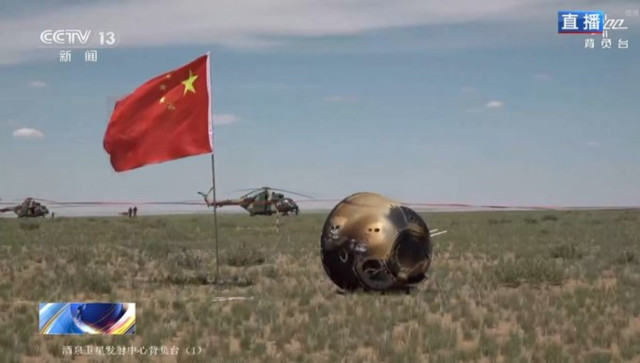
A little while ago, the capsule carrying the Moon samples taken during the Chang’e-6 mission landed in the Siziwang Banner, meaning an autonomous county of Inner Mongolia. The lander with the return module landed on the Moon when in China it was June 2, spent about two days collecting samples, and the return module took off to transport the samples to orbit and start the voyage back to Earth. Recovery personnel found the capsule, which will be transported to a laboratory in Beijing, where operations will begin to open it without contaminating its contents.
After releasing the capsule with the Moon samples from an altitude of around 5,000 kilometers, the return module carried out more maneuvers to return to space. There, a new mission can begin, which will depend on the amount of propellant remaining. The Chinese authorities will provide information regarding this possible mission at their convenience.
The Chang’e-6 mission is important because it brought back to Earth samples taken on the far side of the Moon. Researchers from various disciplines are interested in the results of the analyzes of these samples because they can offer important new information for understanding the history of the Moon, closely linked to the history of the Earth. On the Moon, traces of primordial impacts were preserved much better than on Earth, where geological processes heavily influenced the position and composition of rocks. This means that it can be much easier to reconstruct some phases of the solar system’s history based on what happened on the Moon.
The success of the Chang’e-6 mission represents another progress for China’s space program. In 2026, China is scheduled to conduct the Chang’e-7 mission, another evolution within the robotic exploration program of the Moon which in this case, should target the South Pole. The ultimate goal is to find the resources to support the presence of a crewed Moon base. According to Chinese plans, the first taikonauts, as they call their astronauts, should land on the Moon in the course of the next decade.

